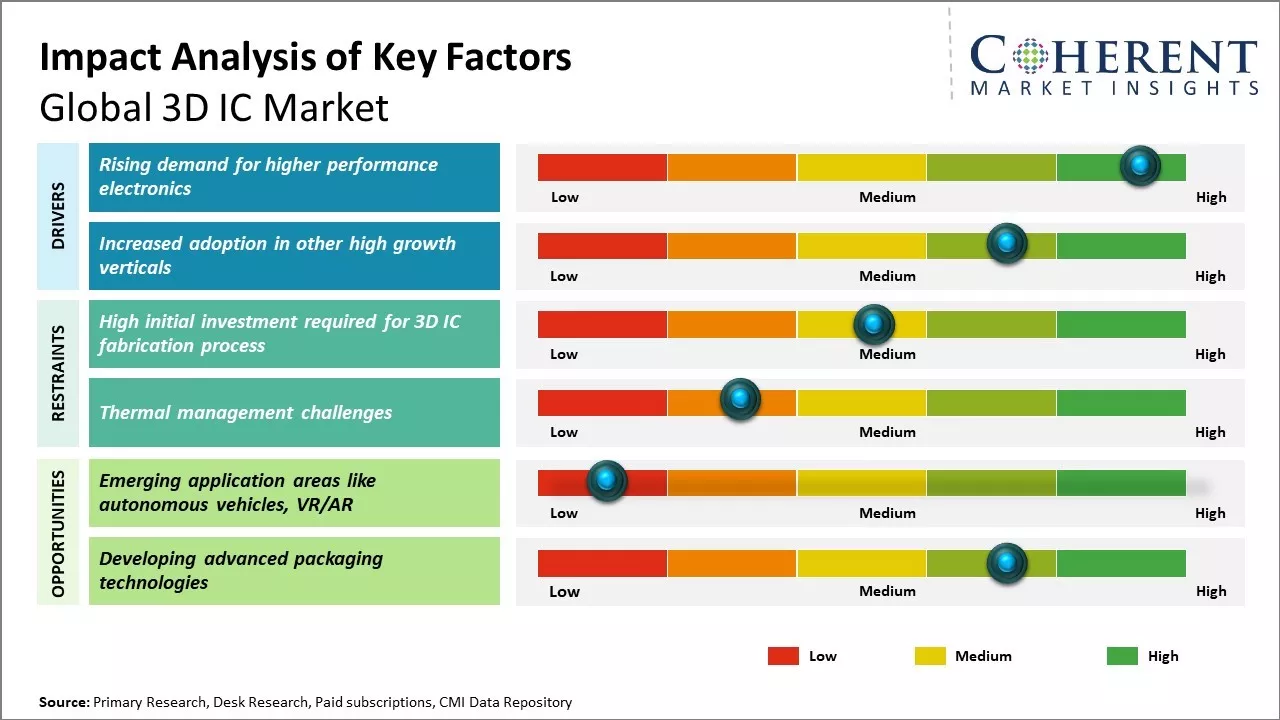The global 3D ICs market is estimated to be valued at US$ 19.84 Bn in 2025 and is expected to reach US$ 73.66 Bn by 2032, exhibiting a compound annual growth rate (CAGR) of 20.6% from 2025 to 2032.

To learn more about this report, Request sample copy
The 3D ICs market is expected to witness robust growth over the forecast period. The miniaturization of semiconductor chips and the need for greater functionality with smaller form factor is expected to drive the demand for 3D ICs technology. 3D ICs help in overcoming challenges faced by traditional 2D scaling by enabling thinner chips, more functional capabilities and better performance. With growing demand for smart and connected devices across industries, stacked die and 3D ICs market will continue gaining prominence. The increasing penetration of 3G/LTE connectivity in mobile devices also supplements the need for higher functional integrated circuits (ICs) integrating memory and logic chips in a single package utilizing 3D ICs technology.
Rising demand for higher performance electronics
The demand for higher performance and more powerful consumer electronics such as smartphones, tablets, and other handheld devices has been growing rapidly in recent years. Users expect their devices to deliver more processing power and memory capacity to support applications such as high-resolution graphics, virtual reality, and mobile gaming. At the same time, there is constant pressure on device manufacturers to make devices thinner, lighter and more power efficient. Integrating more transistors in a traditional 2D chip design is becoming increasingly difficult due to physical and electrical interference limitations. 3D ICs technology allows stacking of multiple silicon wafers or die and facilitates vertical integration of different components such as RAM, graphics, wireless, and processing. This significantly increases the area available for circuitry and helps accommodate many more transistors and features in the same footprint. It also reduces distances between different components, resulting in improved speed and lower power consumption. Many top manufacturers of mobile processors and graphics chips have already started adopting 3D ICs design and manufacturing to deliver next generation devices with enhanced capabilities. Going forward, as consumer demands for even faster and more powerful yet energy efficient devices increase, 3D ICs is expected to play a bigger role in fulfilling those needs.
For instance, in September 2022, STMicroelectronics, a U.K.-based company, introduced a sophisticated VDA-compliant LIN alternator regulator designed to enhance the performance and adaptability of 12V automotive systems. This advanced regulator, known as the L9918, leverages a 3D ICs and improved functionality to ensure the reliability of 12V automotive systems. The L9918 allows users to customize settings such as alternator characteristics and voltage set points.
Joining thousands of companies around the world committed to making the Excellent Business Solutions.
View All Our Clients